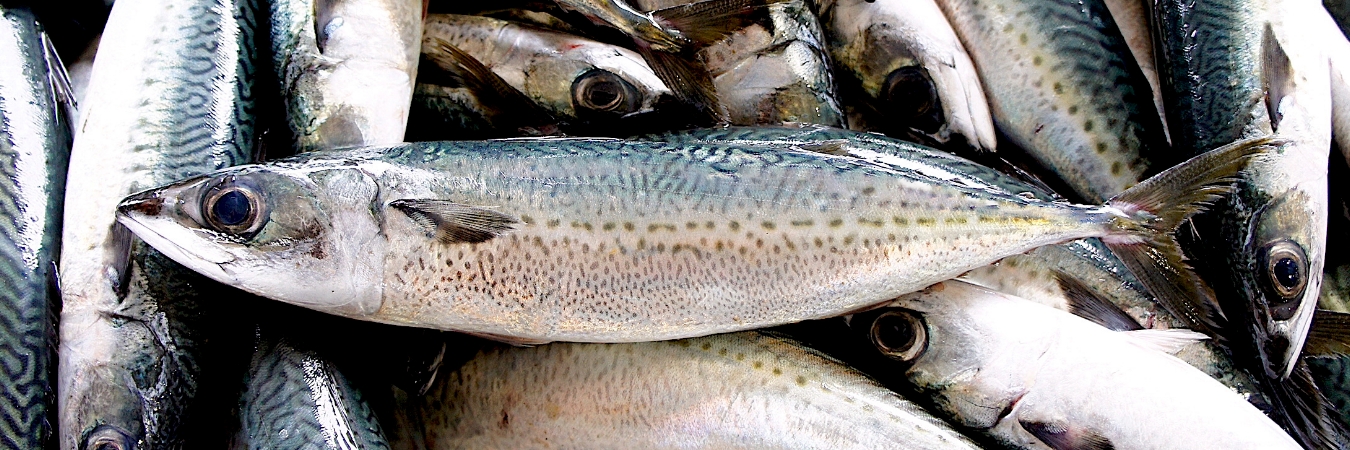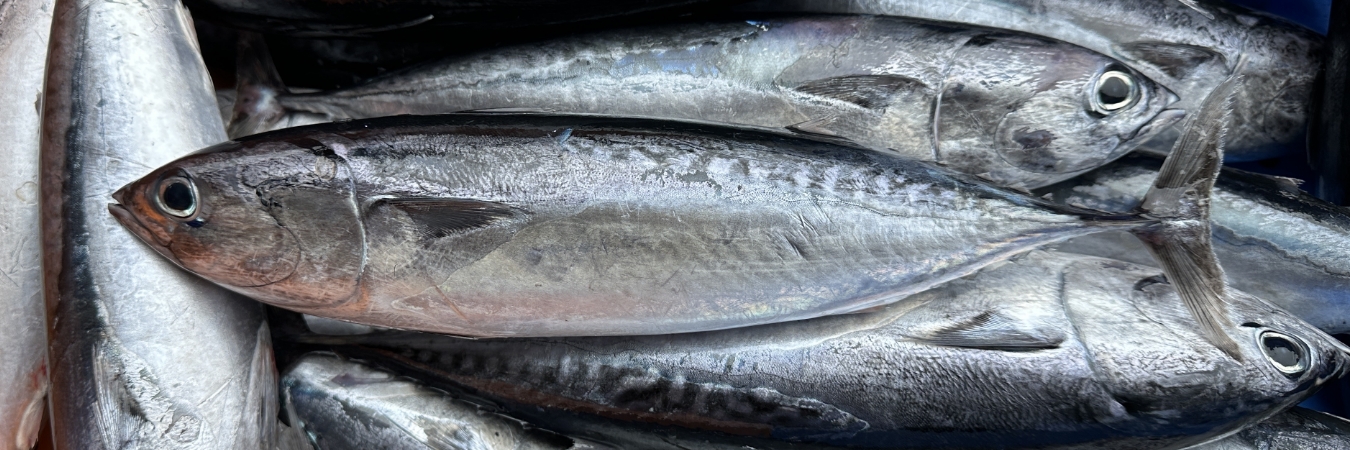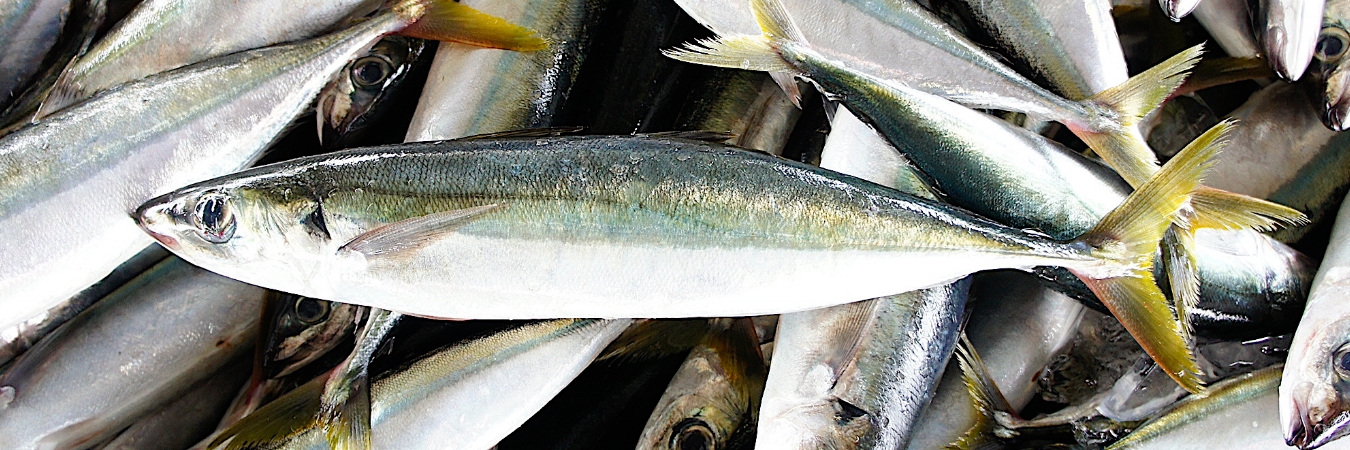We mainly process these three types of fish.

When spring arrives, the fish migrate along the Black Current from the East China Sea to the waters off the Japanese archipelago, seeking food. In spring, they start incubating their eggs, and both sexes eat as much as they possibly can to store nutrients for producing milt, for the males, and eggs, for the females. When their flesh firms up, becoming glossy, mackerel are called “spring mackerel” and if there are good reports from the fishermen about their catches, we swing into high gear here. The stock we obtain has a deep sweetness, richness, and taste along with a refreshing fragrance from the blueback’s fat. In addition, it goes well mixed with the stock taken from smoked and dried red-eye round herring, auxis, or bonito, and is used in hot dipping sauces for udon and soba, as well as ramen and miso soup. Mackerel with mold on it is widely used in Kanto cuisine, while in Kansai they prefer it without the mold.

These fish appear all around the Japanese archipelago around February,
and are seen as an alternative to bonito. Known as “mechika” or
“close-eyed” in Japanese, a reference to how close their eyes are
together.
Mechika come as flat species and round species, and both are
used for stock. As they provide a rich flavor and intense color, they
are blended with mackerel and used for udon or soba dipping sauces.
Like mackerel, auxis with mold is preferred in the Kanto region, and
without mold is preferred in the Kansai region.

From November to February, these fish swim north along the Black Current to arrive off the coasts of Japan before the mackerel. Famous as the fish used to make the pungent “kusaya” dried fish, their flesh is a bit firmer than mackerel, and they are divine when eaten raw as sashimi. Scad come in red, yellow, and silver varieties, and creating bushi from them allows all to be used for making stock. They are mainly popular in central Japan, where they are favored for the crisp stock that blueback fish provide.











